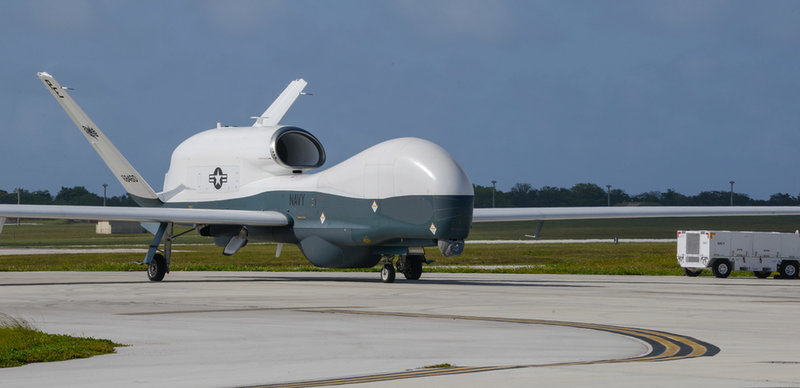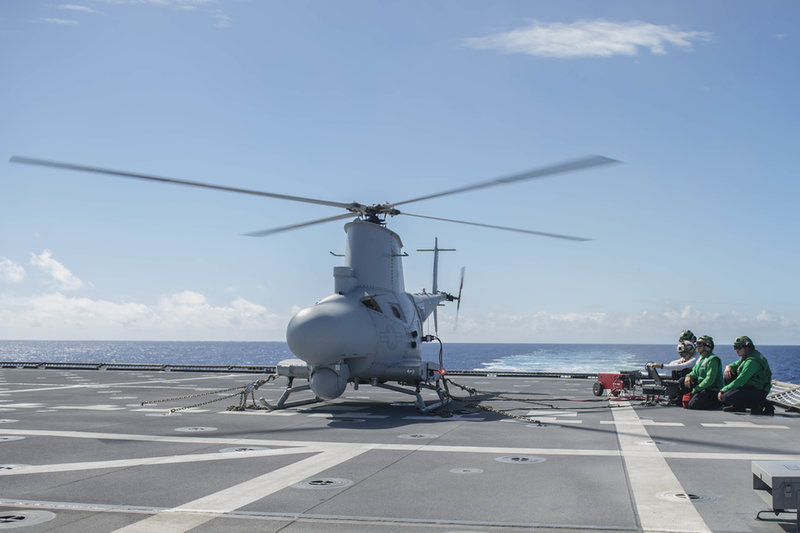Talking business: Northrop Grumman on aerial projects
From uncrewed systems to the B-21, Northrop Grumman has a diverse portfolio of aerial platforms. Harry Lye spoke to Northrop Grumman vice-president and general manager for autonomous systems Jane Bishop, and vice-president for manned airborne surveillance programmes Janice Zilch, about the E-2D, uncrewed systems and milestones in the aerial domain for the year ahead.
Harry Lye:
What milestones can we expect to see for projects in the aerial domain in the coming year?
Jane Bishop:
The industry has hit several important milestones in the first few months of 2021. In early March, the US Air Force announced its move to seek potential alternative and improved solutions to further support current autonomous systems.
In early April, the US Navy announced its Next-Generation Air Dominance (NGAD) efforts would likely be a family of systems incorporating several unmanned aircraft concepts and the F/A-XX fighter as the centrepiece. Employment of current systems, including Triton and Global Hawk, and the acquisition of these systems across alliances in Europe and Asia, continue to make these systems powerful tools in the current and emerging threat environment.
This pivotal shift in focus addresses security challenges from potential near-peer adversaries. It comes at a time when new capabilities in design and advanced manufacturing are furthering the military’s need to develop tomorrow’s capabilities, today. Agile software development, open architecture, and digital engineering – sometimes referred to as the digital trinity – are fast becoming the industry requirements for future aircraft development.
This year, the aerial domain can expect many more next-gen concepts, such as Skyborg and a system or systems to replace MQ-9, moving through a rapid development pipeline that increases system capability while driving down cost.
Concurrently, future UAS development will need to work with other systems, manned and unmanned, to continuously adapt to the changing battlefield at a speed far beyond human abilities. The maturation of Joint All-Domain Command and Control (JADC2) will play a critical role in how platforms – regardless of military branch –share data and intelligence.
In the coming year, we expect Northrop Grumman’s leading JADC2 system: Distributed Autonomy/ Responsive Control (DA/RC) will continue to provide solutions to connect a wide range of complex systems in up to highly-contested environments.
Northrop Grumman works on a number of uncrewed aerial systems. Where does the company see the market going?
Jane Bishop:
In the past decades, autonomous systems have focused on intelligence, surveillance and reconnaissance and communication relay roles while partnering with manned aircraft to combat largely non-state threats. Today, as the military assesses the role of autonomous systems, we’re confident unmanned vehicles will go well beyond surveilling to actively providing targeting data to protecting high-value assets including manned aircraft and making it possible to control highly-contested battlespaces.
As we look toward the role autonomous capabilities will play in the future, Northrop Grumman knows this will be an opportunity to cultivate relationships with countries that share the same concern.
This will be paramount as we evolve technology in a collaborative effort with joint programmes such as SEA129-5 in Australia and Project Mosquito in the UK. These programmes present a valuable capability with nations that understand a transition to a new methodology of command and control will be critical in developing autonomous platforms to serve as a force multiplier as well as a communication node.
Critical to this development is collaborative autonomy. Northrop Grumman’s DA/RC software connects and controls a wide range of highly complex systems across all domains and military branches. Using DA/RC, operators are able to control a large number of systems at machine speed with scalable degrees of human oversight in highly contested environments.
This truly transformational functionality enables seamless human-machine collaboration for effective decision-making and cooperative mission management across distributed manned and unmanned assets.
How does the company see the employment of autonomous UAS developing?
Jane Bishop:
In discussing the MQ-8 Fire Scout autonomous ship-based aircraft, Chief of Naval Operations, Admiral Mike Gilday in the US recently wrote that “unmanned platforms like the MQ-8 Fire Scout play an important role in our US Navy today and will far into the future. Successfully integrating unmanned platforms under, on and above the sea gives us more and better options to fight and win in contested spaces”.
In the US and around the world, autonomous systems are only going to increase in importance, and the collaborated mass and power these platforms represent will provide a strategic advantage in deterring, and if necessary, defeating peer and near-peer adversaries.
Northrop Grumman has long anticipated this strategic shift, which drives our internal advanced autonomous development programme and is centred on three core domains: advanced battle management command and control with DA/RC; air vehicle concepts with specific missions sets; and digitally-enabled advanced design, manufacturing and operational support capabilities that shorten developmental timelines and reduce system design, production and sustainment cost.
With our surveillance-strike, autonomous high-altitude, long-endurance, and medium-altitude, long-endurance aviation portfolio, our internal development efforts position Northrop Grumman to deliver the full range of advanced autonomous system solutions rapidly and affordably in response to evolving customer needs.

// Uncrewed platforms such asthe MQ-8 Fire Scout play an important role in the US Navy. Credit: Northrop Grumman
What is the current state of MQ-4C Triton production and how do you see the system progressing?
Jane Bishop:
To date, Northrop Grumman has delivered nine Tritons to the US Navy, two of which are forward-deployed, while ten aircraft are in the production line, including Australia’s first Triton. The aircraft in the production flow are in the midst of multi-intelligence configuration (IFC-4) upgrades to include retrofits of the previously configured aircraft.
The first IFC-4 Triton is scheduled for its first flight this summer. Concurrently, we are conducting research and development for sense and avoid as well as targeting capabilities, which will significantly enhance Triton’s role in distributed maritime operation and JADC2.

// Northrop Grumman has delivered nine MQ-4C Tritons to the US Navy. Credit: Northrop Grumman
The MQ-8 Fire Scout recently demonstrated its ASW capabilities. What other future capabilities are planned for the platform?
Jane Bishop:
Northrop Grumman is supporting the US Navy and Marine Corps’ Unmanned Campaign Plan, including efforts to expand Fire Scout deployments on a range of surface ships and providing greater lethality to the joint force through its intelligence, surveillance, reconnaissance, and targeting capabilities.
This year, France signed an agreement to purchase the E-2D. What do continued orders say about confidence in the platform?
Janice Zilch:
France has operated the E-2C platform for more than two decades and is the only other country besides the US currently operating the E-2C from an aircraft carrier. This capability, combined with France’s lon-gstanding partnership with the US Navy, has allowed for increased interoperability exercises between nations.
Northrop Grumman continues to deliver high-quality aircraft as a trusted partner to the US and our allies, and France’s commitment to the procurement of additional next-generation E-2D aircraft demonstrates that valued partnership.
France’s procurement of the E-2D will provide its air defences unparalleled situational awareness and reinforce the interoperability between French and US forces.
The E-2 platform first flew in the 1960s and has been upgraded ever since. What's next for the aircraft?
Janice Zilch:
Northrop Grumman has partnered with the US Navy, providing airborne early warning and command and control for the Carrier Air Wing for nearly 60 years. We continue to work closely with the navy to evolve these capabilities and ensure the E-2 outpaces future threats.
The E-2D provides a generational leap in technology, advancing the capability significantly, and with a mature and robust technology roadmap, the E-2D expands its ability to defend the carrier operations.
The future E-2 will evolve, as it has over the last 60 years, and Northrop Grumman will continue to partner with the US Navy as they determine their next-generation requirements. We are investing in technology to address future mission and vehicle requirements and align with the US Government’s strategic doctrine. Northrop Grumman stands ready to support the US Navy as they transition to the future.
// Main image: France and the US are both currently operating the E-2C from an aircraft carrier. Credit: Northrop Grumman
AIR